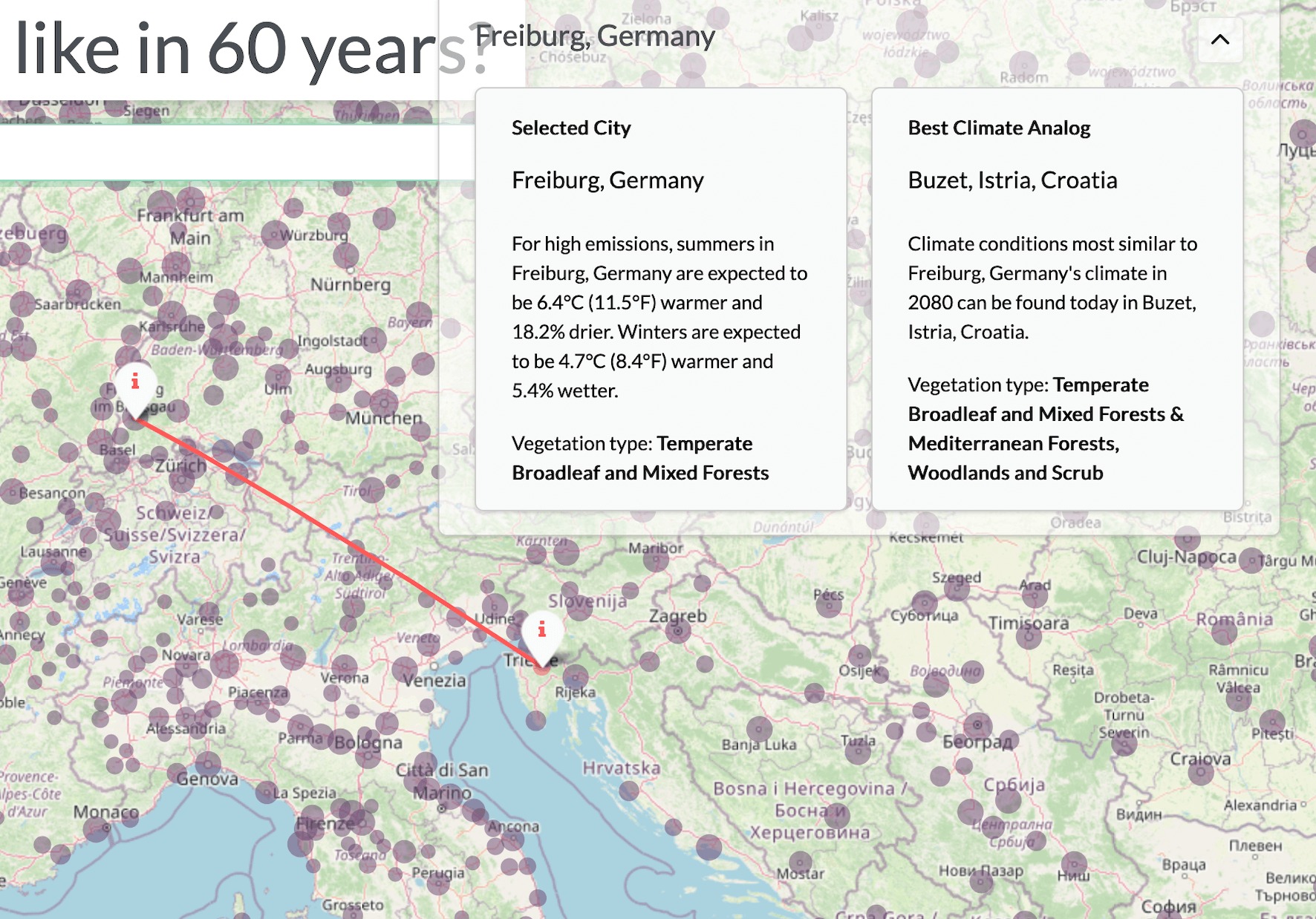Climate change is already altering our planet. Droughts, floods and extreme weather are increasing—and it feels like every new month is named the hottest month since records began. And the dramatic changes in the climate, which are in tandem with rising CO2 emissions, are very likely to accelerate further in the coming decades.
But how will climate change affect where you live? How hot will the summers be? Will it still snow in winter? And what will the vegetation look like in 2080? An interactive map provides answers to these questions, visualising what different city’s climates will be like in 60 years.
The map gives you a city to compare to
However, the map not only shows how much warmer and drier (or wetter) a city will become but also compares that city with places whose current climate is similar. For example, if you live in Hamburg, you would have to travel to Castelraimondo in the province of Macerata in Italy to find out how your city’s climate would be in 2080: hot summers, Mediterranean forests and lots of undergrowth. Freiburg, on the other hand, will feel like today’s Istria in Croatia.
Using the map, it’s also possible to see how things could change if succeed in reducing CO2 emissions. The app shows the results for both high and reduced emissions scenarios. Known as Shared Socioeconomic Pathways or SSPs, SSP5-8.5 is used for high emissions and SSP1-2.6 for reduced emissions.
The map was developed by Matt Fitzpatrick at the University of Maryland Center for Environmental Science – Appalachian Lab. If you go through the various locations, you might find that for some cities, there is no perfect “future city” comparison. This means, as the developer notes, that no two cities will have identical future and present climates in 60 years. And many cities, especially those near the equator, could experience a climate in the future that is not comparable to any known climate on Earth today. This becomes all the more likely the higher CO2 emissions climb.
As well as the weather aspect of climate change, it would also be interesting to include the rise in sea levels, as this will greatly change our coasts—and therefore many coastal cities. But there are already interactive maps for this, such as the one from the NGO Climate Central.
The maps help us to better understand the consequences of climate change. In particular, the comparison with places that exist today makes the changes clear and shows how crucial it is to take action. In Hamburg, a climate like that of Italy may sound inviting to some. But the ecological, economic and social consequences could be fatal.
The post What Will My City’s Climate Be Like in 60 Years? appeared first on Digital for Good | RESET.ORG.


